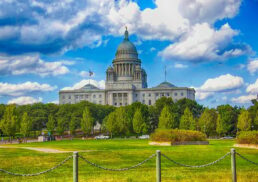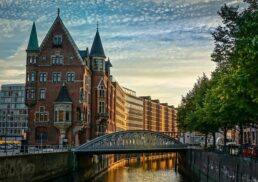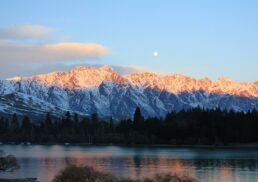Seeking knowledge about Scotland? This guide dives into the heart of Scotland’s dramatic Highlands, unveils the secrets of its historic lochs, and walks you through the vibrant streets of Edinburgh and Glasgow. Prepare to encounter Scotland’s natural splendor, unravel its complex history, and experience its living culture. Ready for an authentic Scottish journey? Let’s get started.
Table of Contents
Key Takeaways
Scotland’s landscapes, with ancient geological formations and storied history, offer grandeur that can be experienced through the Highlands, the west coast beaches, and the mystique of its islands.
Scottish culture is rich and varied, with three official languages and a dedication to preserving cultural identity, evident in its literary contributions, traditional music, and festival celebrations like the Highland Games.
Scotland is a vibrant blend of the old and the new, with cities like Edinburgh and Glasgow offering historic sites and modern cultural scenes, and a national commitment to international relations, development, and industrial innovation.
Discovering the Majesty of Scotland
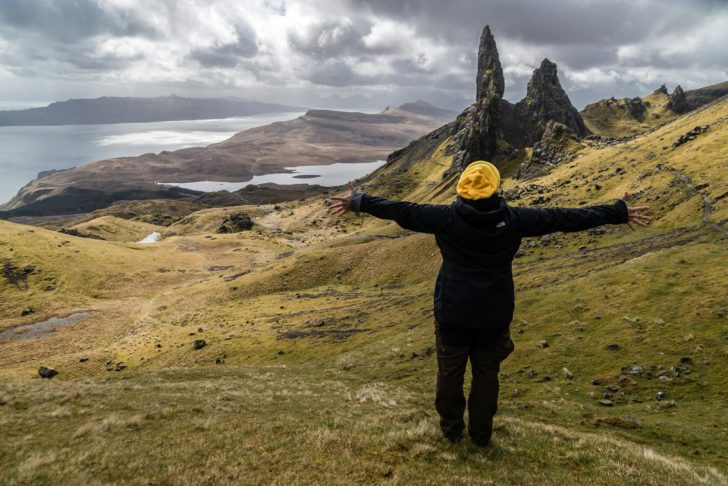
Scotland’s landscapes are an intricate mosaic, shaped by time and nature. The ancient geological formations, such as the 3 billion-year-old Lewisian rocks, set the foundation for a land that exudes majesty at every turn. With a terrain that encompasses the rugged Scottish Highlands, pristine white beaches, and mysterious lochs, Scotland’s natural wonders span nearly 10,000 square miles of pure awe.
An expedition through Scotland takes you across a land sculpted by rivers and glaciers, where Torridonian sandstones whisper tales from 800 million years ago. Here, the beauty of the land is matched only by its storied past, intertwining Scottish history with the raw, untamed spirit of Caledonia. As we uncover the heart of the Highlands, journey along the west coast, and delve into the mystique of the islands, we invite you to discover the soul of Scotland.
The Heart of the Highlands
The Scottish Highlands are a realm of myth and mountain, where the sparse population allows nature to reign supreme, framed by the Highland Boundary Fault – a geological scar that marks the dramatic entrance to this northern sanctuary. It is a place where the air is crisp and the vistas are endless, with the Highlands stretching across the northern part of Scotland, inviting all who dare to explore its mountainous terrain.
As you journey through the Highlands, you will:
Follow the trails of clans and kings
Gaze upon lochs that hold secrets of ancient creatures
Traverse hills that have been witnesses to centuries of history
This is the land where Scottish culture finds its deepest roots, among castles that have withstood the test of time and landscapes that have inspired artists and poets alike.
From the southern uplands to the central lowlands, the Highlands offer an escape where the spirit of southeastern Scotland comes alive.
Along the West Coast
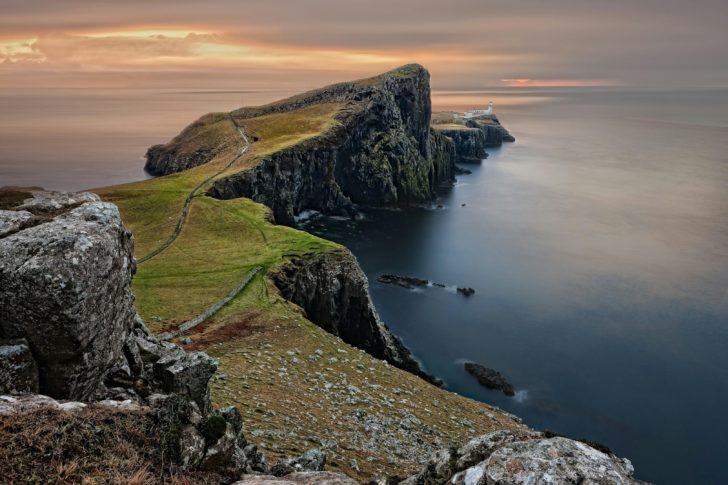
The west coast of Scotland captivates the imagination where the Atlantic Ocean meets historic castles and sprawling beaches. Camusdarach Beach is a perfect representation of this coast’s allure, with sands that glisten under the Scottish sun and views that stretch to the horizon, revealing nearby islands that seem to float on the sea. It’s a place for adventurers to engage with the elements, whether through the thrill of sea kayaking or the tranquility of rock pooling.
The west coast is a blend of serenity and adventure, where visitors can experience:
The elements sculpting the land
The history of Scotland etched into every cliff face
The convergence of the north, south, east, and west in a symphony of natural beauty
The central lowlands giving way to rugged mountains and hills
A different rhythm of life in harmony with the sea and the sky
The Mystique of the Islands
Shrouded in the mystique of their Norse heritage, the islands of Scotland bear the legacy of the Kingdom of the Isles that reigned for over four hundred years. The Hebrides, Orkney, and Shetland were the jewels of this era, each island with its own unique character and tales of Viking conquests. The islands beckon travelers to explore their rugged landscapes, their ancient lochs, and the rich tapestry of cultures that have shaped their history.
To step onto a Scottish island is to step into a different world, one where the mainland feels a world away, and the landscape holds the keys to a storied past. Skye’s dramatic mountains rise from the mist, while the serene lochs reflect the ever-changing Scottish sky. The islands are a testament to the diversity of Scotland’s natural beauty, offering a retreat for the soul and an adventure for the spirit.
A Glimpse into Scottish History and Heritage
Scotland’s history is as rugged and profound as its landscapes, with human habitation dating back to the end of the last ice age. The Wars of Scottish Independence, a series of military campaigns against England, were a defining period in Scottish history, beginning in 1296 and culminating in 1328. These wars were fueled by political maneuvers, such as Edward I of England’s proposal of a marriage alliance with his son to the Scottish heir, Margaret, setting the stage for centuries of conflict.
Scottish history, woven through the Acts of Union and the Industrial Revolution, contributed to Scotland’s transformation into a major European power. Despite political unions, including the ascension of James VI of Scotland to the throne of England and Ireland in 1603, Scotland has preserved its distinct identity through its:
law
church
schools
culture
Independence remains a contemporary issue in Great Britain, with a 2014 referendum deciding to keep Scotland within the United Kingdom, reflecting a modern chapter in the nation’s long and storied history.
Echoes of Ancient Caledonia
The “name caledonia”, with its ancient roots, was first used by the Romans to describe what is now known as Scotland. The echoes of ancient Caledonia are still heard today, especially at sites like the Knockan Crag National Nature Reserve, part of Scotland’s first UNESCO Global Geopark. This reserve is a testament to the country’s geological significance, revealing the story of the Moine Thrust and the history of the Earth itself.
Caledonia’s landscape is a testament to the tumultuous geological forces that shaped Scotland, from its soaring mountains to its deep lochs. The land carries the weight of history, reminding us of a time when the country was a wild expanse untouched by human hands. As we peel back the layers of time, we find that Scotland’s history is deeply entwined with the very rocks that form its foundation.
The Fabric of Modern Scotland
Modern Scotland is a colorful and complex tapestry, woven from strands of history, culture, and a population of about five million people. Since 1999, Scotland has operated with a devolved parliament, signifying a form of self-governance within the framework of the United Kingdom. This modern Scottish identity is one that honors its past while actively shaping its future, as evidenced by the 2014 independence referendum, where the nation expressed its desire to remain part of the UK.
Scotland’s contemporary narrative is one of a nation secure in its identity yet open to change. It’s a place where:
the Scottish government and people navigate the complexities of global relationships
uphold the traditions and values that make Scotland unique
the fabric of modern Scotland is rich, diverse, and endlessly fascinating.
From the bustling streets of Edinburgh to the quiet glens of the Highlands, Scotland offers a unique and captivating experience.
Vibrant Scottish Culture: More Than Just Kilts and Bagpipes
Scotland’s vibrant culture, an intricate mosaic, is composed of its:
linguistic heritage
literary contributions
traditional music
festive gatherings that celebrate community spirit
The recognition of three official languages, English, Scots, and Scottish Gaelic, showcases the country’s dedication to preserving its cultural identity. The decline of Scottish Gaelic during the late Middle Ages marked a significant linguistic shift, yet the language continues to be a cherished part of Scotland’s cultural fabric.
Scotland’s culture is a living tapestry that stretches beyond the iconic kilts and bagpipes to include a rich tradition of storytelling, poetry, and music that resonates with the heartbeats of its people. It’s a culture that takes pride in its history while embracing the dynamic currents of the modern world. From the Highlands to the Lowlands, culture in Scotland is as layered as its landscapes, each thread telling a story of its own.
Language and Literature
Bearing witness to a rich linguistic heritage, Scotland’s literary tradition is as old as the ancient Goidelic languages once spoken in Pictland and Dál Riata. Poets like Robert Burns and literary figures such as Sir Walter Scott and Robert Louis Stevenson have woven the Scottish experience into the fabric of global literature. J.M. Barrie’s ‘Peter Pan’ and the works of Carol Ann Duffy, the first woman, Scottish, and LGBT Poet Laureate, further exemplify Scotland’s diverse literary contributions.
The power of language in Scotland is seen not only in its literature but also in the daily lives of its people. It’s a place where words carry the weight of history and the promise of the future. From the romantic verses of Dunbar in King James’ court to the modern narratives that capture the complexities of contemporary life, language and literature in Scotland are as enduring as the country’s rolling hills and deep lochs.
Melodies of the Land
Just as varied as its landscape, the melodies of Scotland are uniquely Scottish, featuring traditional music with instruments like the bagpipe, fiddle, and tin whistle. The country’s musical heritage is celebrated at events such as the Edinburgh Jazz and Blues Festival, showcasing both Scottish talent and international artists. This is a land where music is not just entertainment, but a form of expression that connects the past with the present, and the individual with the community.
From the Highlands to the Lowlands, the music of Scotland is a reflection of its soul. It’s a sound that can be as haunting as the mist over the mountains or as joyous as the laughter at a ceilidh. The melodies of the land are a testament to Scotland’s enduring love for its cultural roots, and an invitation to the world to partake in its rich musical traditions.
Festivals and Highland Games

Scotland’s community spirit is perhaps best exemplified through its festivals and Highland Games, events rich in tradition and camaraderie. From May to September, these traditional games unfold across the country, showcasing feats of strength, skill, and culture. The festivals of Scotland, like:
World Whisky Day
Edinburgh Festival Fringe
Highland Games
Burns Night
Not only celebrate the nation’s revered spirits but also the splendor of its natural landscape, which serves as both the backdrop and inspiration for these vibrant gatherings.
The Highland Games are a microcosm of Scottish culture, where the past is honored, and the present is enjoyed with full zest. Visitors can witness the thrill of the caber toss, the grace of highland dancing, and the stirring sound of massed pipe bands. These festivals are a celebration of life, a testament to the enduring spirit of the Scots, and a warm invitation to the world to join in the revelry.
The Urban Pulse: Edinburgh, Glasgow, and Beyond
Scotland’s urban pulse, strongest in its cities, is where history and modernity merge, creating vibrant centers of life and culture. Edinburgh, the capital city located on the east coast, is a symbol of Scottish sovereignty and a hub of cultural and political activity. Meanwhile, Glasgow stands as Scotland’s cultural powerhouse, a city teeming with artistic energy and architectural marvels that draw visitors from around the globe.
In these cities, the rhythm of Scotland’s urban life is palpable. From the storied cobblestone streets of Edinburgh to the contemporary galleries of Glasgow, the cities of Scotland offer a juxtaposition of the old and the new. They are places where the country’s traditions are preserved, yet innovation and progress are embraced with open arms.
As we delve into the allure of Edinburgh and the vibrant scene of Glasgow, we find that Scotland’s cities are as captivating as its countryside.
Edinburgh: The Capital’s Allure
Edinburgh’s allure is rooted in its historical and cultural sites, with the majestic Edinburgh Castle, the most-visited paid attraction in Scotland, dominating the city skyline. The capital’s festivals, especially in August, are a testament to Edinburgh’s vibrant cultural scene, with a diverse range of events that showcase creative talent from Scotland and beyond. It is a city of festivals and fairy tales, where history is written in stone, and every corner tells a story.
The charm of Edinburgh is not merely in its monuments but in the daily life that unfolds within its walls. It’s a city where:
the echoes of bagpipes mix with the buzz of modern life
the ancient stone of destiny rests alongside symbols of the nation’s heritage
it welcomes the world with open arms, offering a glimpse into the heart of Scottish culture.
Glasgow: Scotland’s Cultural Powerhouse
Renowned for its vibrant arts scene, Glasgow proudly stands as Scotland’s cultural hub. Home to over a hundred cultural organizations and five of the nation’s national performing arts companies, Glasgow is a beacon that attracts and nurtures creative talent. The city’s contemporary art scene has produced a wealth of Turner Prize winners and nominees, underlining its status as a crucible of artistic innovation. Glasgow’s architectural heritage, particularly the works of Charles Rennie Mackintosh, has garnered international acclaim and admiration, showcasing the city’s aesthetic and historical richness.
The city’s cultural milieu is a dynamic fusion of the traditional and the contemporary, where the past is not only preserved but also reinterpreted through a modern lens. It’s a city where every street corner offers a different melody, every gallery a new perspective, and every building a story of its people’s ambitions and achievements. Glasgow is more than just a city; it’s a cultural odyssey that reflects the soul of Scotland in all its complexity and vibrancy.
Scotland’s Role in Global Affairs
Scotland’s influence, extending far beyond its borders, plays a vital role in global affairs through its international relations, development initiatives, and industry innovations. The nation’s global recognition in travel is evident, with accolades from National Geographic and Lonely Planet highlighting Scotland’s standing on the world stage in 2024. This international acclaim is a testament to Scotland’s appeal as a destination that combines natural beauty with a rich historical and cultural heritage.
In the realm of global relations, Scotland demonstrates its commitment to development and trade, aligning its policies with the United Nations’ Sustainable Development Goals to address poverty and inequality by the year 2030. With international offices established worldwide, Scotland fosters relationships and expands its influence, engaging with key global players such as the US, China, Canada, India, and Pakistan. The nation’s dedication to international development is further exemplified by the International Development Fund, which focuses on supporting countries like Malawi, Pakistan, Rwanda, and Zambia, showcasing Scotland’s tailored approach to global partnership.
International Relations and Development
Characterized by its strategic engagement in trade, investment, and support for key UN issues, Scotland’s international presence is significant. Through its Economic Strategy, Scotland aims to enhance its global trade and influence, while aligning with the UN’s Sustainable Development Goals to combat poverty and inequality. The nation has established a network of nine international offices to solidify relationships and promote its interests, showcasing a commitment to being an active player on the world stage.
The International Development Fund, a symbol of Scotland’s dedication to international development since 2005, has invested over £100 million in projects that foster education and economic growth in countries like Rwanda and Zambia. These initiatives reflect a bespoke approach to development, aiming to make a high-impact difference in the lives of global communities. Scotland’s international development efforts are a clear indication of its desire to contribute meaningfully to a more equitable and sustainable world.
Innovations and Industry
Marked by a history of innovation and a forward-thinking approach to technology and business, Scotland’s industrial landscape is notable. From the Industrial Revolution to the present, Scotland has excelled in sectors such as high-tech solutions, digital health, and sensor technologies, positioning itself as a leader in wireless communication and big data. The nation’s financial services, with a heritage in banking and insurance, are exploring new frontiers in fintech and cybersecurity, reflecting its role as one of Europe’s leading financial centers.
The Scottish health and life sciences industry thrives on collaboration among companies, universities, and healthcare providers, creating a vibrant ecosystem for innovation. In Scotland, the following industries are recognized for their expertise and ambitious plans:
Aerospace and space technology: Scotland is recognized for its satellite technology expertise and has plans to grow the space industry to a value of £4 billion by 2030.
Oil and gas: Scotland’s expertise in oil and gas is globally sought after.
Renewable energy: Scotland is committed to renewable energy and has groundbreaking projects like the world’s first floating offshore wind farm.
Moreover, Scotland’s creative industries, including digital media and gaming, have achieved international success, contributing to the nation’s reputation as a hotbed of creativity and industry. This success has also caught the attention of the First Minister, who acknowledges the importance of these industries in Scotland’s economy.
Embracing the Great Outdoors
Those who seek the tranquility of nature and the thrill of adventure are beckoned by Scotland’s great outdoors. The country’s diverse seasons offer a range of experiences, including:
The blossoming beauty of spring
The fiery hues of fall
The warm weather and extended daylight of summer, ideal for exploring the northern reaches
The enchantment of snowy landscapes and cozy retreats in winter
Each season provides the perfect canvas for outdoor activities, showcasing the beauty of our planet despite the ongoing challenges of climate change. As we approach May 2024, we can continue to appreciate and protect our environment.
For those wishing to immerse themselves fully in Scotland’s natural splendor, there are numerous camping and caravan sites available. The Scottish Outdoor Access Code even permits wild camping, allowing adventurers to connect with the land in a most authentic way. Whether it’s hiking through ancient forests, sailing on crystal-clear lochs, or simply enjoying the serenity of the remote Highlands, embracing the Scottish outdoors is an experience that feeds the soul.
Hiking the Trails
Catering to walkers and hikers of all abilities, Scotland’s diverse hiking trails offer everything from gentle strolls to challenging climbs. Some of the popular hiking trails in Scotland include:
Ben Nevis: The towering peak of Ben Nevis, the UK’s tallest mountain, beckons the brave.
West Highland Way: This long-distance trek takes you through some of Scotland’s most stunning scenery.
Southern Upland Way: Another long-distance trail that offers a challenging hike through beautiful landscapes.
St Cuthbert’s Way: For those seeking a path with spiritual resonance, this trail traces the journey of a seventh-century saint, combining natural beauty with historical significance.
Whether you’re looking for a leisurely walk or an adventurous climb, Scotland has something to offer for every hiker.
These trails are more than just routes across the landscape; they are journeys through history and culture. Equipped with waymarked paths and visitor services, Scotland’s hiking routes allow for multi-day hikes that can be as immersive or as leisurely as one desires. Whether you’re scaling a Munro or enjoying a picnic by a placid loch, the trails of Scotland offer an escape into nature that is both invigorating and restorative.
Wildlife and Nature Reserves
Scotland’s wildlife and nature reserves serve as sanctuaries of biodiversity. Some examples include:
Forsinard Flows National Nature Reserve, known for its peatlands
Ben Wyvis National Nature Reserve, home to diverse tree species
Cairnsmore of Fleet National Nature Reserve, conserving the wild and scenic beauty of southwest Scotland
The Great Trossachs Forest National Nature Reserve, playing a vital role in conservation efforts
These reserves support a rich variety of flora and fauna, offering a glimpse into the nation’s commitment to preserving its natural heritage.
The reserves offer interactive experiences, such as wildlife watching cruises on Loch Shiel and birdwatching at Tentsmuir National Nature Reserve. These activities not only enhance our appreciation of Scotland’s natural beauty but also foster a deeper connection with the environment. The trails through Glen Affric and the reserves encourage discovery and exploration, inviting visitors to witness the wonders of the natural world up close.
Culinary Journey Through Scotland
A voyage through flavors and traditions that define the nation’s gastronomic heritage, Scotland’s culinary journey is remarkable. From the iconic haggis to the beloved shortbread, traditional dishes are deeply rooted in the Scottish way of life. The use of local ingredients like Aberdeen Angus beef and the bounty of Scotland’s clear waters reflects the country’s rich natural larder and commitment to quality and freshness. The contemporary dining scene in Scotland is dynamic and innovative, with chefs drawing inspiration from traditional recipes and infusing them with modern techniques and global flavors.
This culinary innovation has led to a reimagining of Scottish cuisine, where local ingredients like venison and craft ales are showcased in new and exciting ways. It’s a gastronomic renaissance that honors the past while embracing the future, offering a taste of Scotland that is both authentic and contemporary. Whether it’s savoring a hearty meal in a rustic pub or indulging in a fine dining experience, Scotland’s culinary journey is a feast for the senses.
Traditional Scottish Fare
A celebration of the country’s agricultural heritage and the natural abundance of its lands and seas, traditional Scottish fare is special. Haggis, a savory blend of meat, oatmeal, onions, salt, and spices, is the centerpiece of Scottish cuisine, often accompanied by neeps and tatties. Shortbread, a classic Scottish confection, provides the perfect sweet counterpoint to the nation’s hearty and savory dishes. Sheep farming has played a significant role in shaping Scottish gastronomy, influencing the flavors and dishes that are cherished across the country.
Sitting down to a traditional Scottish meal is to partake in a ritual that stretches back generations. It’s a culinary heritage that is as much about the ingredients and preparation as it is about the communal experience of sharing food. From the smoky scent of peat-infused whiskies to the rich textures of local cheeses, traditional Scottish fare is a testament to the country’s love for its food and the land from which it comes.
Contemporary Scottish Dining
A tapestry of tastes and textures, contemporary Scottish dining sees chefs honoring the country’s culinary traditions while pushing the boundaries of innovation. Utilizing local ingredients like shellfish, game, and salmon, Scotland’s modern chefs are transforming the nation’s culinary reputation, creating dishes that are as visually stunning as they are delicious. In Scotland’s modern dining scene, classic recipes are reengineered with quality local produce, forging a new image for Scottish gastronomy that is both sophisticated and accessible.
The reimagining of traditional Scottish recipes through inventive cooking methods has led to a gastronomic revolution. This culinary evolution maintains a delicate balance between honoring the storied culinary heritage and embracing new flavors and techniques. From intimate bistros to grand dining halls, contemporary Scottish dining offers an experience that is both a nod to the past and a taste of the future.
Planning Your Scottish Adventure
An exciting endeavor, planning a Scottish adventure is facilitated by a wealth of resources available to help tailor the journey to your preferences. Some useful resources include:
VisitScotland’s website, which offers information on accommodations, food and drink options, attractions, activities, and tours throughout the country
The Holiday Carbon Calculator, which provides insight into the environmental impact of your travels
VisitScotland’s travel blog, which is a treasure trove of inspiration and the latest travel ideas, perfect for those seeking what’s new and exciting in Scotland.
From the planning stages to the moment you set foot on Scottish soil, every aspect of your trip can be crafted to ensure a memorable experience. Whether you’re drawn to the rustic charm of the Highlands or the bustling energy of the cities, Scotland offers a diverse range of destinations that cater to all tastes and interests. With the right resources at your fingertips, your Scottish adventure can be as unique as the country itself.
Where to Stay
As varied as the country’s landscapes, the options for where to stay in Scotland are numerous. Accommodations range from:
self-catering apartments
luxury hotels
budget-friendly B&Bs
unique stays in castles and lighthouses
grand country houses
boutique suites
family-run inns
golf resorts
Each offering a distinct flavor of Scottish hospitality. For a more personal touch, Bed and Breakfast accommodations provide a cozy environment and the chance to receive local insights from hosts who are passionate about their country.
The VisitScotland Quality Assurance stars serve as a reliable guide for determining the quality of services offered by accommodations across Scotland, helping travelers make informed decisions that align with their preferences and budgets. No matter where you choose to stay, you will find that Scottish accommodations are more than just a place to sleep—they are an integral part of the travel experience, offering comfort, character, and a warm welcome.
Getting Around
Made easy by its extensive transportation network, getting around Scotland is convenient with trains and buses that connect the country’s cities and remote areas alike. The rail network is especially convenient for covering long distances quickly, offering a seamless travel experience along the east and west coasts. For those seeking scenic vistas, train routes like the West Highland Line provide a unique and breathtaking perspective of Scotland’s natural beauty.
Buses in Scotland offer a cost-effective alternative to trains and are particularly useful for reaching areas not served by the rail network. Long-distance coach services, such as those provided by National Express and Megabus, connect major cities, while regional buses enable exploration of the countryside and smaller towns.
Whether saving money or seeking control over your itinerary, Scotland’s transportation options ensure that every journey is part of the adventure.
Check out A Road Trip Guide to Discovering the Scottish Highlands.
Summary
Our journey through Scotland has taken us from the serene Highlands to the vibrant streets of its cities, from the echoes of ancient Caledonia to the pulse of contemporary culture. We have uncovered the rich tapestry of Scottish history, embraced the great outdoors, savored the flavors of traditional and modern cuisine, and discovered the country’s global influence. Scotland is a land of contrasts and a mosaic of experiences, each piece contributing to the whole of this enchanting country.
As we conclude our exploration, let us carry with us the inspiration that Scotland provides. This is a place where every loch, mountain, and glen tells a story; where culture is not just preserved but celebrated with fervor; and where history and progress dance together in harmony. Whether you are planning your visit or simply dreaming of distant lands, Scotland awaits with open arms and a wealth of wonders to discover.
Frequently Asked Questions
What are some of the oldest geological formations in Scotland, and where can I learn more about them?
You can learn more about some of the oldest geological formations in Scotland, such as the Lewisian rocks, by visiting the Knockan Crag National Nature Reserve, which is part of Scotland’s first UNESCO Global Geopark and includes the Moine Thrust.
What are the Highland Games, and when do they take place?
The Highland Games are traditional Scottish events that take place across Scotland from May to September. They combine sports, culture, and community, featuring activities such as caber tossing and highland dancing competitions.
Can I go wild camping in Scotland?
Yes, you can go wild camping in Scotland under the Scottish Outdoor Access Code, but it’s important to follow the guidelines for responsible camping.
What is the best way to experience Scotland’s culinary scene?
To experience Scotland’s culinary scene, try traditional dishes like haggis and shortbread, and explore modern dining with innovative takes on classic recipes. Scotland offers a wide range of culinary experiences, from rustic pubs to fine dining establishments.
How can I ensure that my travel plans are environmentally friendly when visiting Scotland?
To ensure your travel plans are environmentally friendly when visiting Scotland, use tools like the Holiday Carbon Calculator to understand the environmental impact of your trip, choose accommodations with the VisitScotland Quality Assurance stars, and utilize public transportation to minimize your carbon footprint.


